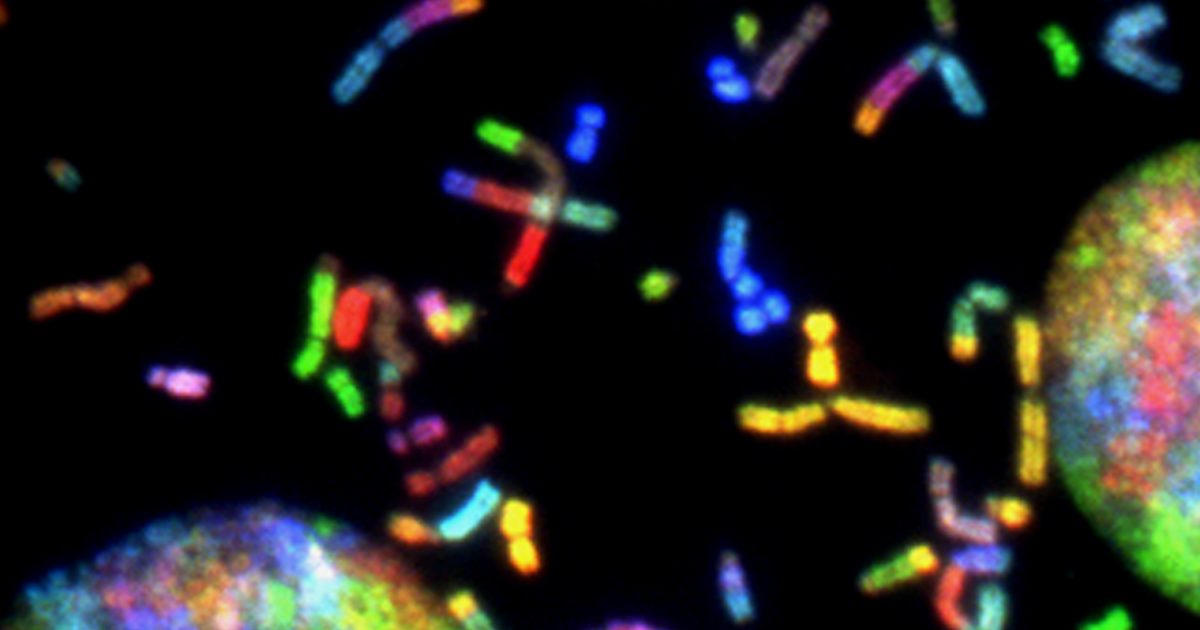Von Hippel-Lindau (VHL) disease is a rare genetic condition (autosomal dominant disorder) characterized by the formation of cysts and tumors in multiple potential locations. It occurs in roughly 1 out of every 36,000 people. The tumors can be either cancerous or noncancerous (benign). Some common tumors associated with the disease include pheochromocytomas of the adrenal glands, hemangioblastomas of the eye and brain, endolymphatic sac tumors of the inner ear, and renal cell carcinomas.
How Does VHL Occur?
This condition occurs due to a deletion or mutation in the VHL gene, located on the short arm of chromosome 3. This is a tumor suppressor gene that typically helps to control tumor growth and survival. Everyone has two copies of the gene, one from each parent. When the tumor suppressor gene works correctly, it keeps the growth of cancerous and noncancerous tumors normalized and 'in check.' However, when there is a mutation in the VHL gene, that 'keep in check' ability is inhibited. There is an increase in various growth factors, new blood vessels are easily created (angiogenesis), and the formation of tumors occurs. There are several different ways this mutation can occur.
Hereditary VHL
Read MoreDe Novo VHL
In approximately 20% of the cases, a patient will be the first in their family to have the VHL mutation. This is called a de novo (new) mutation. It occurs due to chance in one of the germ cells (egg or sperm) or the young embryo prior to cell differentiation. The patient will not know they have the disease until they start presenting with symptoms, such as hemangioblastomas or pheochromocytomas. It is possible a patient will pass on the mutation before they even realize they have the disease.Mosaicism
A very small proportion of patients have what is called mosaicism. This is when the VHL mutation is only present in particular organs. This mutation occurs later in the embryo's development, most likely during cell differentiation. If it was not in the germ cells, it would not carry the same hereditary characteristics and would likely not be passed on to their children.Does VHL Skip Generations?
VHL is a dominant gene, meaning it typically will pass from parent to child as it only takes a single mutated copy of the gene to cause the disease. This is called the germline mutation, which is found in all cells. Although it only takes one mutated copy to have VHL, a second mutation must occur for the tumor suppressor gene to malfunction and lead to tumor growth. It is rare, but sometimes people do not ever experience a second mutation in a particular organ site and do not have tumor development. Although the patient would still have VHL that could be detected with a genetic test, it could make the disease appear as if it had skipped a generation. However, this is extremely uncommon. It is estimated that 97% of patients who have the germline VHL mutation will have manifestations of the disease by the time they are 65 years of age.
Genetic Testing to Diagnose VHL
Genetic testing is the only way to conclusively diagnose von Hippel-Lindau disease. It is performed via a blood test. This is not a test that is recommended for the general population as VHL is considered a rare condition. There are no specific screening guidelines to prompt diagnostic testing. However, genetic testing should be considered if a patient has a family history of the disease and one or more of the following symptoms, or no known VHL history and two or more of the following symptoms are present:
- Hemangioblastoma
- Clear cell renal cell carcinoma
- Pheochromocytoma
- Endolymphatic sac tumor
- Several renal or pancreatic cysts
- Pancreatic neuroendocrine tumor
- Papillary cystadenomas of the epididymis and broad ligament
Genetic Testing for Hereditary VHL
If hereditary VHL is suspected, the patient's blood sample just needs to be compared to an affected family member's sample. The mutation itself should be the same. If it is a match, the patient has VHL. Although the mutation will be identical, this does not mean that the presentations of the disease will be the same. Some families with VHL see trends in tumor types, but this is not always the case. One family member may have only a couple of non-problematic cysts, while another family member has a malignant disease.
Genetic Testing for De Novo VHL
In cases of de novo VHL mutations, a patient does not necessarily know to have a genetic test performed. Most likely, their physician will recommend the test if they have manifestations of the disease, meaning multiple tumors that are characteristic of VHL and/or perhaps tumors occurring earlier in life than expected. Most people are diagnosed between 12 and 35 years of age.
Medical professionals may also recommend genetic testing based on family history before the patient presents with any tumors. A family history of multiple tumor types in different organs and extensive history of renal cell carcinoma, pheochromocytomas, or hemangioblastomas would all be prominent findings of a potential VHL mutation. For de novo cases, the sample would need to be compared to a large database of patients with VHL to look for similar mutations that would indicate the presence of the disease.
Pregnancy
Von Hippel-Lindau genetic testing can also be performed prior to or during pregnancy to determine if the fetus carries the mutation. If in vitro fertilization (IVF) is performed, the embryo can be tested before implantation. During pregnancy, genetic testing is done via amniocentesis (during the second trimester or later) or chorionic villus sampling (during the first trimester). It is recommended that patients of childbearing age with VHL meet with a reproductive specialist or genetic counselor to discuss their options.
Surveillance for Patients with VHL
There are ten different sites that can be affected by von Hippel-Lindau. It is impossible to anticipate when or where tumors may arise. For this reason, surveillance is essential for managing VHL. If tumors are identified early, they are much easier to either treat with medications or remove surgically, if applicable. The Active Surveillance Guidelines were developed to streamline recommendations for screening for patients with VHL. If a patient has VHL that has been passed down from a family member, and VHL mutation is known, routine surveillance will be started in infancy.
Surveillance for VHL may include the following:
- Physical exam and evaluation of the eyes, blood pressure, and pulse are recommended at least annually, starting in early childhood.
- Testing for pheochromocytomas is recommended annually, starting at 5 years of age.
- An MRI of the brain and spine, as well as an audiogram, are recommended biennially (every 2 years), starting at age 11.
- At age 15, an MRI of the abdomen is recommended every 2 years, and an MRI of the internal auditory canal is performed once.
- Annual physicals, eye exams, and blood pressure/pulse evaluations continue for life, while all other surveillance recommendations stop at age 65.
Routine surveillance is important so that renal cell carcinomas and other problematic tumors can be caught as early as possible in disease progression.
Genetic Counseling
It is recommended that all patients considering genetic testing meet with a genetic counselor. Although taking the blood sample carries no risk of harm to the patient, the mental and emotional aspects should be considered. There are definitely benefits to knowing if a VHL mutation is present. Routine surveillance helps detect tumors earlier, so they are easier to manage with surgery or medications. However, knowledge of the disease is also associated with increased stress and anxiety. Performing genetic testing is not a decision to be made lightly. Genetic counselors can help guide patients through this process and detect this condition as early as possible. Doing so will help keep each patient on their journey to better health. The VHL Alliance is a great resource for patients and families looking for more information on VHL.
Learn more about SurvivorNet's rigorous medical review process.





